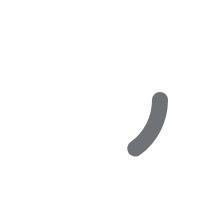Yei and Yeibichai rugs evolved at the beginning of the 1900s when traders were encouraging Navajo weavers to replace the old wearing blanket patterns with designs that the traders could sell to tourist outlets and department stores. Different styles, like Two Grey Hills, Ganado and Crystal developed around those trading post areas.
Some trader in the Shiprock area suggested that weavers should take figures from the traditional healing sand paintings and use them in their weavings. There are several theories about who was the first to come up with the idea, but that’s another subject. The fact is that the Yei pattern featuring these Navajo Gods was born. These figures face forward as they do in the traditional sand paintings.
Then some weaver came up with the idea of depicting a Yeibichai ceremony. The Yeibichai are dancers, dressed in elaborate costumes and leather masks whose job is to take on the spirit of the Yeis in a special healing or blessing ceremony that takes place after the first frost in the fall. This is a public ceremony and the more people that attend, the more energy will be imparted to the person being healed or blessed.
The family of the patient is responsible for feeding all of the attendees and for compensating the Yeibichai dancers and Medicine Man. After the dancers perform their duties, the patient retreats to the hogan where the Medicine Man performs his healing ceremony with elaborately created sand painting designs, chants and prayers.
Navajo Yeibichai weavings depict the dancers from the side and often times include Talking God and Water Sprinkler (also considered Yeibichai).
Today we are featuring two Yeibichai weavings, both by accomplished artists who were born in 1956. They are two women who have gained great recognition for their weaving ability.

Ruby White Yeibichai Weaving, 30" X 36", $3,300
This weaving by Ruby White is a classic example of the best of this style. Ruby lives just south of Shiprock, where the pattern began. Her work is widely collected and her designs are simple and elegant. This weaving is beautifully made, has two borders and surrounds five Yeibichai dancers led by Talking God and followed by Water Sprinkler. She is known for the intricate dress of her dancers and the contrasting simplicity of the overall work. Some years ago, she began putting her initials in the border of the weaving.

"Leading the Way" by Sandy Begay, 21" X 34", $3,600
A little less than 60 miles Southeast of Ruby’s home is the Burnham Chapter Area where Sandy Begay lives. Her modern interpretation of the Yeibichai is unique in it’s design. Her Yeibichai are shown facing forward, but behind each of them is the shadow spirit of the Yei directing the dancers. In the center is the Medicine Man and at both ends there are eagle feathers above and below the face of a Female Yei. Sandy’s dancers are dressed simply, as they might have been hundreds of years ago, in animal skins.
The difference between these two pieces illustrates something I love about Navajo weaving; the ability of the artist to weave essentially the same style with such different interpretations. Both of these great pieces would make a nice additions or beginnings to your Navajo weaving collection!
Thank you for following our blog!

